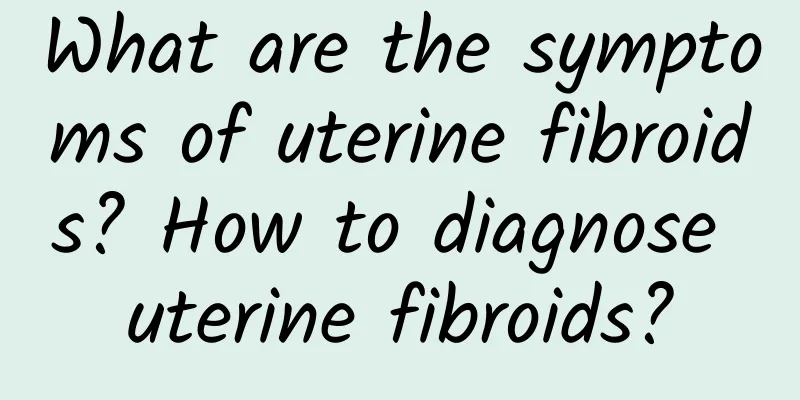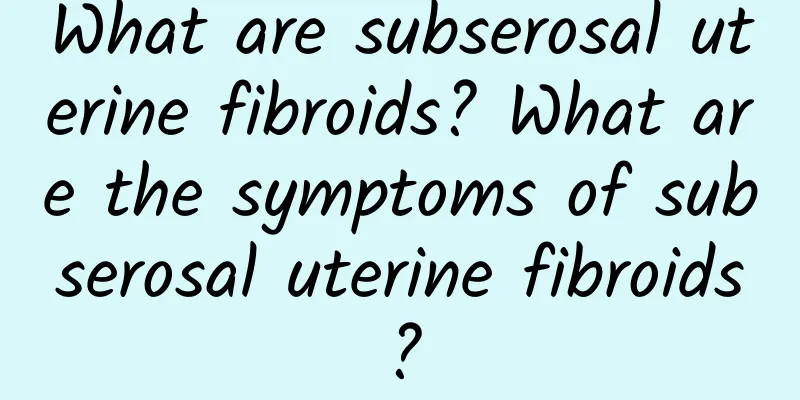What are the symptoms of uterine fibroids? How to diagnose uterine fibroids?

|
Women in menopause must pay attention, because at this time they are more susceptible to diseases such as uterine fibroids. Uterine fibroids are multiple benign tumors, but they also have the possibility of malignant changes. Therefore, patients should detect and determine the treatment plan for uterine fibroids in the early stage. Therefore, it is very important to understand the symptoms of uterine fibroids in the early stage, which can help us treat these uterine diseases more timely. Uterine fibroids show different symptoms according to the growth site of the tumor and other factors. Some patients have no obvious symptoms, which is often not conducive to the treatment of uterine fibroids. The main symptoms of uterine fibroids include: The vast majority of uterine fibroids can cause menstrual changes, usually excessive menstrual bleeding, prolonged menstrual period, shortened physiological period, etc. Due to the different growth sites and sizes of uterine fibroids, different compression symptoms can occur. Because uterine fibroids change the morphology of the uterus, or hinder the implantation of fertilized eggs, or uterine fibroids grow in the corners of the uterus, hindering sperm from entering the fallopian tubes, as well as uterine fibroids and ovarian dysfunction, infertility can be caused. When shallow ulcers appear on the surface of submucosal fibroids, leucorrhea will increase. Purulent leucorrhea can be complicated by infection. Uterine fibroids can make patients feel as if something is pressing on their abdomen, and sometimes the pressure is more severe. Some patients can feel a lump in the lower abdomen, which is as big as a pear, and the bladder is more obvious in the morning. The reason for excessive or long menstruation is that uterine fibroids enlarge the volume of the uterus, and the area of the endometrium increases accordingly or the endometrium is too thick, which hinders uterine contraction. These obvious menstrual changes mainly occur in submucosal fibroids and intramural fibroids. A small number of patients may have dysmenorrhea or lower abdominal pain Therefore, it can be said that there are many symptoms of uterine fibroids. These symptoms seem to have nothing to do with uterine fibroids, but if there are various similar symptoms, we should pay attention to them. However, it is not very reliable to find uterine fibroids based on symptoms alone, and regular diagnosis can detect the disease early. |
<<: What are the specific symptoms of uterine fibroids? What are the hazards of uterine fibroids?
Recommend
Paying attention to the cause of uterine fibroids can help people prevent the disease in time
In recent years, the incidence of uterine fibroid...
How to treat uterine fibroids?
How to treat uterine fibroids? I believe that fem...
Xiao Tiantian uses a strange method to lose weight and eat amino acids to prevent bad breath
Xiao Tiantian has been successful in both love an...
Do you know how to treat ovarian cysts?
What are the treatments for ovarian cysts? Do you...
What are the symptoms of chronic cervicitis? Complete list of Chinese medicine methods for treating cervicitis
Chronic cervicitis is a common disease. So for fe...
Be careful about your kidneys during the Mid-Autumn Festival. Kidney patients should eat less salt to avoid burdens
As the Mid-Autumn Festival is approaching, doctor...
How to treat uterine fibroids during 40 days of pregnancy?
If uterine fibroids are found after pregnancy, a ...
Beware of amenorrhea caused by premature ovarian failure before the age of 40
Ovarian dysfunction, unable to respond to gonadot...
Lose weight quickly after giving birth? 10 Diet Tips You Must Know
Most people start to gain weight after giving bir...
How to treat cervical erosion in pregnant women? Pregnant women should pay attention to the treatment of cervical erosion
Nowadays, many pregnant women are diagnosed with ...
Four major hazards of uterine fibroids
What are the main hazards of uterine fibroids? Ut...
What are the symptoms of endometrial tuberculosis?
Among common gynecological diseases, endometrial ...
How much bleeding is enough to confirm miscarriage
There is no absolute answer to the question of ho...
Six tips for getting in shape in spring and exercising in winter
Regular exercise can increase vitality, promote p...
What is ovulation bleeding?
Ovulation bleeding, also known as ovulation bleed...









